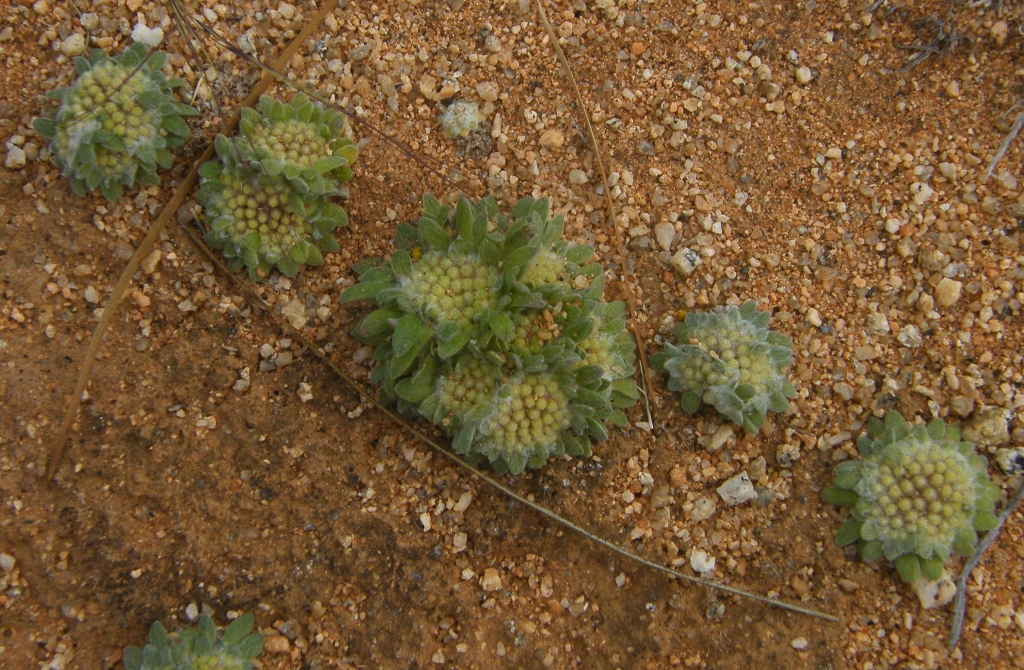Chthonocephalus
Annual herbs consisting of a compound head surrounded by a flat, basal rosette of leaves or (in non-Victorian species) with a conspicuous stem usually branched near base. Leaves alternate or apparently opposite, sessile, entire, cobwebby or villous. Inflorescence with or without subtending, hyaline, leaf-like bracts; general receptacle disc-like, solid or shortly branched, glabrous or hairy; individual capitula discoid, homogamous, (2–)5–50 per compound head; capitular bracts 1-seriate, largely hyaline, but with an opaque midrib, margins usually with long hairs. Florets c. 5–40 per capitulum, bisexual, each (or pairs) subtended by a hyaline receptacular bract; corolla tubular, 3–5-lobed, yellow; style branches truncate; stamens as many as corolla-lobes, anthers tailed. Cypselas obovoid, smooth or with mucilage-producing papillae; pappus absent (in Victoria).
An endemic Australian genus of c. 6 species.
Short, P.S. (1999). Chthonocephalus. In: Walsh, N.G.; Entwisle, T.J., Flora of Victoria Vol. 4, Cornaceae to Asteraceae, pp. 805–806. Inkata Press, Melbourne.
 Spinning
Spinning

